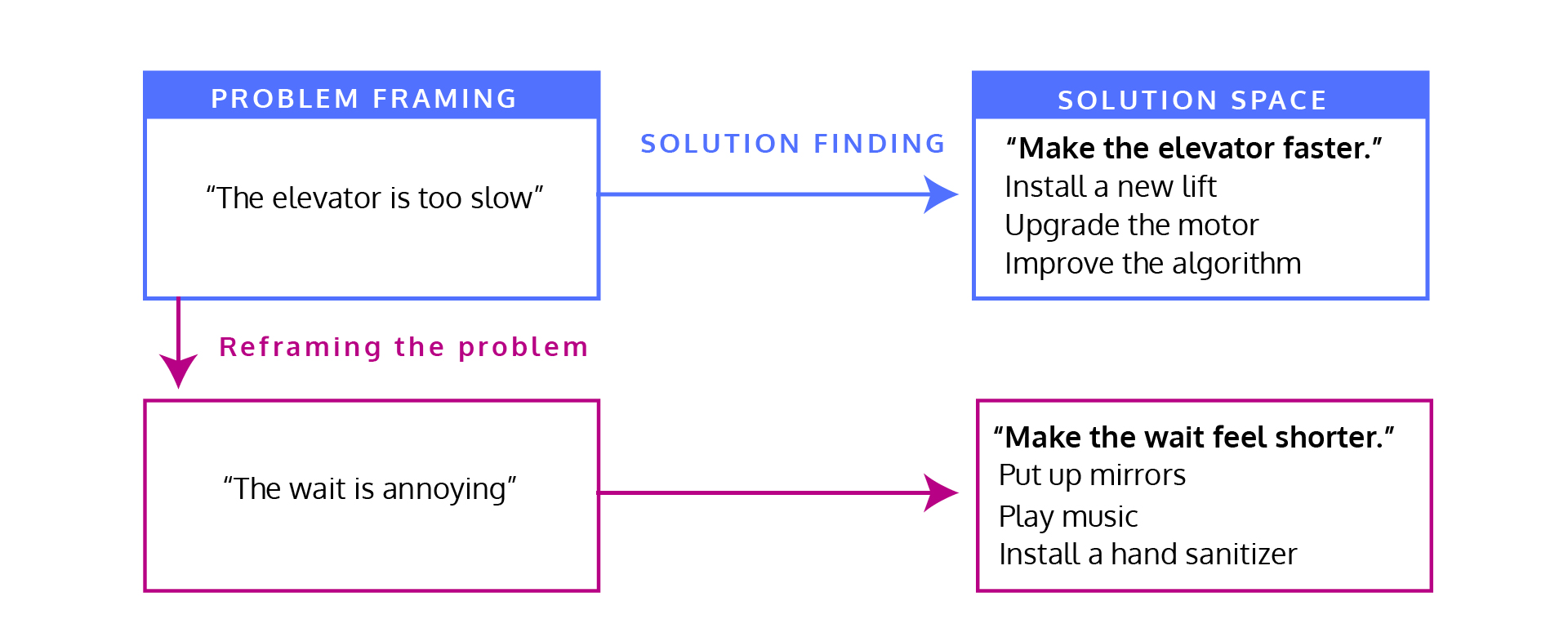
After more than 15 years together, my husband still can't quite wrap his head around what I actually do for a living! But what he does notice is that I spend a ton of time in meetings, brainstorming with my clients. During our work sessions, I'm all about asking questions, doing interviews, and then diving into the nitty-gritty of analyzing, organizing, and comparing info.
I'm a brand consultant and strategist. I help companies tackle the real issues and pain points their clients are facing, so they can stand out in the crowd and build up that customer loyalty. You see, in today's crazy competitive business world, brands are always hunting for new ways to stay cool and really connect with their target audience.
Lateral thinking is a creative way to solve problems. It's all about flipping the script on the usual approaches and ideas, and encouraging folks to think outside the box. It's super important 'cause it lets us come up with fresh solutions and rethink our game plans in this fast-paced business jungle.
Going beyond the obvious:
That is why in my job, I seek to challenge assumptions and break down mental barriers, in order to help my clients see their brand challenges from a new perspective. This opens up a world of opportunities and uncovers hidden potential for them that might have otherwise remained untapped.
At Scalto we are a team of creative consultants dedicated to driving business growth through strategic branding and communication, and our clients look to us for innovative ideas and fresh perspectives. Lateral thinking allows us to escape the confines of conventional thought patterns and explore uncharted territories.
For example, when I interview a financial person, and ask him/her what does the brand evoke in his/her opinion? I almost always hear answers like “quality”, “revenue”, “efficiency”... because they see it through the prism of their department. So I have to insist gently, and find other types of questions: “if the brand was a person? A color?...” to make them find the words to describe a brand, and not a product or a company.
Adapting to Change: Navigating Uncertainty
The business landscape is ever-changing, and unforeseen challenges can arise at any moment. Lateral thinking equips brand consultants to adapt swiftly and navigate uncertainty. By encouraging clients to explore alternative scenarios and possibilities, we help them become more agile and responsive to shifting market dynamics.
We worked for this telecommunications company that wanted to promote its new 5g technology to better compete on its market, but when talking with the different directors and observing that every company was competing for the best “g” on the market, we identified a strong need for rejuvenating the brand and to connect with a new younger audience, which led to one of our major rebranding project in Venezuela: Digitel.
The Art of framing: asking the right questions
One of the most significant contributions we can make is in framing the right questions. Oftentimes, our clients come to us with an apparently clearly defined problem, for example “we are entering a new market, we need to be sure that we are differentiated from our competitors and have clear and attractive messages to generate leads”, or “we are losing market share, we need to review our marketing processes and their effectiveness” but it's crucial to dig deeper and discover the underlying issues. By asking thought-provoking questions that challenge the status quo, we succeed in revealing valuable insights that lead to effective solutions, thinking beyond immediate solutions and focusing on creating lasting value.
I remember this great article from the Harvard Business Review by Thomas Wedell-Wedellsborg, where he was talking about the “slow elevator problem”...: “Imagine this: You are the owner of an office building, and your tenants are complaining about the elevator. It’s old and slow, and they have to wait a lot. Several tenants are threatening to break their leases if you don’t fix the problem.”
The obvious question, hence solutions, emerged:

But when you reframe the problem by thinking laterally, you can find much more efficient, cost-effective solutions that even have an emotional benefit for the users, or can solve an underlying and deeper problem that will have a more interesting output for the brand and the company: “Put up mirrors next to the elevator. This simple measure has proved wonderfully effective in reducing complaints, because people tend to lose track of time when given something utterly fascinating to look at—namely, themselves.”

So, how do we think laterally for our clients?
Around our ScaleX Program, from our long experience across different industries, geographies and business cases, we have developed key tactics that allow us to absorb the client’s knowledge and perspective, and leave room for us to explore new ways to think or frame a specific problem. Here are my favorite ones:
- Acknowledge being an outsider and embrace it - there are no dumb questions! It’s only natural that I don’t know everything about Nanotechnology industrial lubricants, or wine tasting processes, but I love that I have the opportunity to learn a bit from such different industries!
- Hear different perspectives: interview persons from different areas of the company, years of experience, or geographies
- Do It With You - have people write down individually their own vision, in their own words.
- Spend time to align the different members of the C-suite on a clear business ambition so that we all work together from the beginning toward the same strategic north
- Ask questions that are not directly related to the problem described or their work area (e.g. “what keeps you up at night?”) - sometimes we get answers directly related to the person’s area of expertise or the initial problem, but sometimes we see other answers such as “the world I’m leaving for my children”, and this starts an interesting conversation on how to broaden or deepen the company’s ambition
- When reviewing the competitive environment, also consider examples from other categories that went through the same issue, don’t only review your direct competitors.
- Think as a team, having internal review session, leveraging on our diverse backgrounds and industry experience
As the business landscape continues to evolve quickly, the ability to think creatively and challenge conventional wisdom will be the driving force behind companies’ success. Embrace lateral thinking, and watch as this ability to frame the right problems can become a catalyst for growth and prosperity in an ever-changing marketplace.